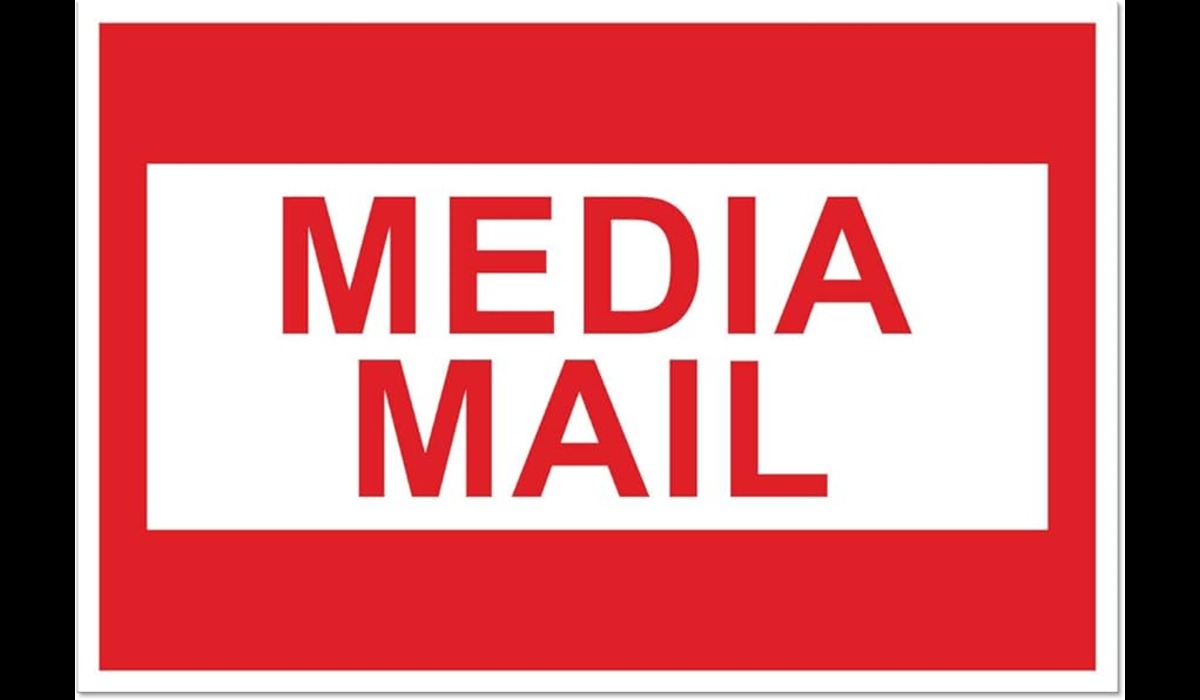Are you a savvy shipper looking to save on postage costs? Curious about an affordable mailing option for our books, CDs, or educational materials? Look no further than Media Mail! In this blog post, we’ll dive into the world of Media Mail, demystifying its definition and exploring how it can benefit your shipping needs. So sit back, relax, and let’s unravel the secrets of what qualifies as ‘media’ in the world of postal services.nderstanding the Concept of Media Mail
Media Mail is a cost-effective postage option offered by the United States Postal Service (USPS) for shipping educational materials, books, CDs, DVDs, and other media-related items. Unlike traditional mail services that charge based on weight and distance, Media Mail rates are determined solely by the package’s weight. This makes it an attractive choice for shipping heavier media items at a lower cost.
To qualify for Media Mail rates, your shipment must contain only eligible media materials. These include printed educational material like textbooks and workbooks, recorded media such as CDs and DVDs, sheet music, manuscripts, and more. Items like clothing or electronics do not fall under the category of ‘media’ and are therefore ineligible for Media Mail.
It’s important to note that Media Mail can take longer to reach its destination compared to priority or first-class mail services due to its lower priority status. However,…
Types of Media Items Eligible for Media Mail
When it comes to sending items through Media Mail, it’s important to know what qualifies as media. Eligible items include books, printed educational material, film, sound recordings, playscripts, loose-leaf pages and binders for medical information.
Media Mail also covers computer-readable media like CDs and DVDs containing prerecorded information. Items must be educational or cultural in nature to qualify for this cost-effective shipping option. Artwork or other non-media related materials are not eligible for Media Mail rates.
Remember that any advertising materials enclosed with your shipment may disqualify the entire package from being sent via Media Mail. It’s essential to accurately classify your items before choosing this mailing option to avoid any issues during transit.
Make sure you’re familiar with the types of media items allowed under Media Mail guidelines so you can take advantage of this economical shipping solution for your next parcel!
Benefits and Restrictions of Using Media Mail
When it comes to shipping items, using Media Mail can offer various benefits. One of the main advantages is cost-effectiveness, as Media Mail rates are typically lower than standard postage options. This makes it a budget-friendly choice for sending educational materials, books, DVDs, CDs, and other media-related items.
Additionally, Media Mail allows for the shipment of media materials up to 70 pounds in weight, providing ample room for bulkier packages without breaking the bank. It also includes USPS tracking and delivery confirmation services at no extra charge, giving you peace of mind knowing where your package is during transit.
However, there are restrictions to be aware of when using Media Mail. Items sent via this service must strictly adhere to the USPS guidelines for eligible media materials. Prohibited items include video games, computer drives or storage devices containing digital files that aren’t educational in nature.
Weighing the benefits against the restrictions can help determine if Media Mail is the right choice for your shipping needs.

Difference between Media Mail and Regular Postage
When it comes to sending packages, understanding the difference between Media Mail and regular postage can save you time and money. Media Mail is a cost-effective option for shipping educational materials such as books, CDs, DVDs, and printed music. It’s a great choice for individuals or businesses looking to send non-urgent media items at a lower rate.
Regular postage, on the other hand, is the standard method of mailing letters and packages through services like First-Class Mail or Priority Mail. While regular postage offers faster delivery times and more tracking options compared to Media Mail, it tends to be pricier for shipping media items.
One key distinction between Media Mail and regular postage is that Media Mail has specific eligibility requirements regarding the types of media items that can be sent using this service. Additionally, there are restrictions on including advertisements or other non-media content in packages sent via Media Mail.
Understanding these differences can help you make an informed decision about which shipping option best suits your needs based on factors like speed, cost, and item type.
How to Properly Package and Label Media Mail Items
When shipping items using Media Mail, it is essential to package and label them correctly to ensure they reach their destination safely and without any issues. Start by choosing the right packaging materials suitable for the type of media you are sending – whether it’s books, CDs, DVDs, or other educational materials.
Use sturdy boxes or envelopes that can withstand the journey through various postal facilities. Make sure to securely seal all edges and seams with packing tape to prevent any damage during transit. Label your package clearly with the recipient’s address and your return address in case there are any delivery issues.
Include a note on the package indicating that it is being sent via Media Mail to avoid any confusion during processing. Double-check that you have accurately declared the contents as eligible media items when filling out the customs form if shipping internationally. By following these simple packaging and labeling guidelines, you can ensure a smooth shipping process for your Media Mail items.
Tips for Shipping with Media Mail
When shipping items using Media Mail, it’s essential to follow a few tips to ensure smooth delivery. Make sure the contents of your package qualify for Media Mail – books, CDs, DVDs, printed music, and educational materials are generally accepted.
Next, securely pack your items in a sturdy box or envelope to prevent damage during transit. Padding materials like bubble wrap or packing peanuts can provide extra protection. Remember to seal the package properly and clearly label it as “Media Mail” on the front.
Additionally, weigh your package accurately and affix the correct postage amount based on weight and destination. You can use online calculators provided by postal services for convenience. For added security and peace of mind, consider purchasing insurance for valuable shipments.
Drop off your Media Mail package at a post office location or schedule a pickup for convenience. Following these tips will help ensure that your media items reach their destination safely and efficiently!
Conclusion: Why You Should Consider Using Media Mail for Your Next Shipment
When it comes to shipping media items, Media Mail is a cost-effective and convenient option that offers savings for senders. By understanding what qualifies as media and following the guidelines for packaging and labeling, you can take advantage of this specialized mailing service.
Whether you are sending books, educational materials, films, or sound recordings, Media Mail provides a budget-friendly solution for your shipping needs. Consider using Media Mail for your next shipment to save money while ensuring your media items reach their destination securely. Make the most out of this postal service and simplify the process of sending media materials with ease.




